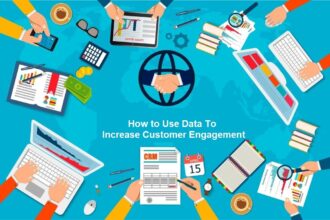Data breaches are becoming much more common these days. PC Magazine reports that 422 million people were affected by data breaches last year. Preliminary research suggests data breaches are going to be even worse this year.
A growing number of companies are recognizing that they need to take proactive measures to help bolster their data security. Software companies are among those most heavily affected, so they are taking dramatic measures. This includes shoring up their supply chain issues.
Still, many companies underestimate the importance of more thorough software supply chain security management, believing they are free of threats and vulnerabilities. Such an approach can lead to catastrophic consequences.
Luckily, this approach is beginning to change, primarily thanks to industry behemoths like Sonatype, who do everything they can to make software development companies aware of the risks associated with software supply chains.
And today, we’ll talk about the most significant of these risks. Here are the top ten software supply chain security threats and vulnerabilities (along with tips & practices on preventing them). If you need additional tips on data security, then you should read this article we wrote.
#1 Vulnerabilities in Code
Code is king. It influences how software functions and interacts with other systems, creating the baseline for software products.
However, vulnerabilities in code present a significant security risk for the entire software supply chain. This usually happens when developers make mistakes or overlook potential security holes during the coding process.
Hackers often exploit these vulnerabilities to gain unauthorized access to systems, manipulate software functionality, or steal sensitive data. Regular code reviews, vulnerability scanning, and automated testing can help identify and fix these vulnerabilities before they become an issue.
#2 Overdependecy on Third Parties
Introducing third-party components has become one of the key elements of software supply chains. Whether it’s outsourced development, open-source components, or external hosting services, each can play a significant role in the efficiency of a software supply chain.
However, these third-party components also introduce risk, and any vulnerability in these third-party services can compromise your entire supply chain.
Mitigating this risk involves conducting regular security audits of third-party services and having contingency plans in place should a third party suffer a security breach.
#3 Public Repositories
Public repositories such as GitHub and Docker are treasure troves for developers, offering an abundance of resources. However, they also pose a considerable risk. Malicious actors often inject compromised code into public repositories, hoping it will be cloned or forked into unsuspecting victims’ projects.
To reduce risks associated with public repositories, use private repositories whenever possible. Also, always inspect the code you’re pulling from public repositories and use tools that can automatically check for known vulnerabilities.
#4 Build Tools
Common build tools, for example, Buddy or Jenkins, can also introduce vulnerabilities into the software supply chain. If these tools are compromised, they can inject malicious code into the software during the build process.
You will also want to use analytics tools. They are shown to be highly important for supply chain management.
It’s crucial to protect your build tools like any other critical system. Regular updating and patching, minimizing unnecessary functionalities, and restricting access to these tools are some ways to mitigate the associated risks.
#5 Distribution Systems
Distribution systems are another common point of weakness. If an attacker manages to compromise the distribution system, they can manipulate the software update or delivery process to install malicious software on end-user devices.
Protecting your distribution systems involves implementing strict access control, using secure delivery methods, and regularly monitoring for suspicious activity. It’s also crucial to ensure any software updates are delivered over secure channels, ideally with encryption and digital signing to verify authenticity.
#6 Excessive Access to Resources
Excessive access to resources or ‘over-privileged’ access can be a significant risk. When users or systems have more access rights than necessary, it opens up more opportunities for malicious actors to exploit those privileges.
The principle of least privilege (PoLP) is a cornerstone of good security practice here. It advises that any process, program, or user must be able to access only the information and resources necessary for its legitimate purpose. Regular audits of access rights can help identify and correct over-privileged access.
#7 Connected Devices
With the rise of the Internet of Things (IoT), more and more devices are being connected to corporate networks. Each of these devices, from smart thermostats to industrial control systems, represents a potential entry point for attackers.
To secure IoT devices, it’s essential to change default passwords, regularly update and patch devices, and segregate them from other critical network resources. Employing a holistic IoT security strategy can greatly reduce this risk.
#8 Undermined Code Signing
Code signing is an essential security practice in a software supply chain. It involves using a digital signature to authenticate the code’s source, ensuring it hasn’t been tampered with since its publication. However, if a signing key gets compromised, attackers can sign malicious code, making it appear trustworthy.
This undermines the entire purpose of code signing and poses a significant threat to the software supply chain. To safeguard against this, organizations should employ strong key protection measures such as hardware security modules (HSMs). Additionally, they should adopt key lifecycle management practices, including regular rotations, revocations, and recovery strategies.
#9 Distribution Channels
Distribution systems are among the most sensitive points in the software supply chain. They serve as channels for delivering software updates and patches to end-users. If these systems are compromised, they could divert the updates to introduce malicious code or even block critical safety updates.
Best security practices here include adopting secure protocols for software transmission, implementing access controls, and employing real-time monitoring to detect any unusual activity. Ensuring the software updates are delivered over encrypted channels is also vital.
#10 Business Partners and Suppliers
Suppliers and business partners often have privileged access to your systems and data. If these entities do not follow robust security practices, they may inadvertently create a backdoor for cyber attackers into your network.
To mitigate this risk, conduct thorough security audits of your suppliers and business partners, assessing their security policies, practices, and infrastructure. Additionally, include stringent security expectations in contractual agreements. Remember, your supply chain security is only as strong as its weakest link.
Summing Up – How to Keep Your Software Supply Chain Secure?
Software supply chain security is complex but manageable with appropriate risk assessment and mitigation strategies.
By understanding and addressing the common risks and vulnerabilities, you can help secure your software supply chain, protect your organization’s valuable data, and maintain the trust of your clients and partners.
It’s about building a cybersecurity culture that prioritizes vigilance, robust security practices, and continuous improvement. The software supply chain might be complex, but with the right approach, it’s a challenge that can be successfully managed.











